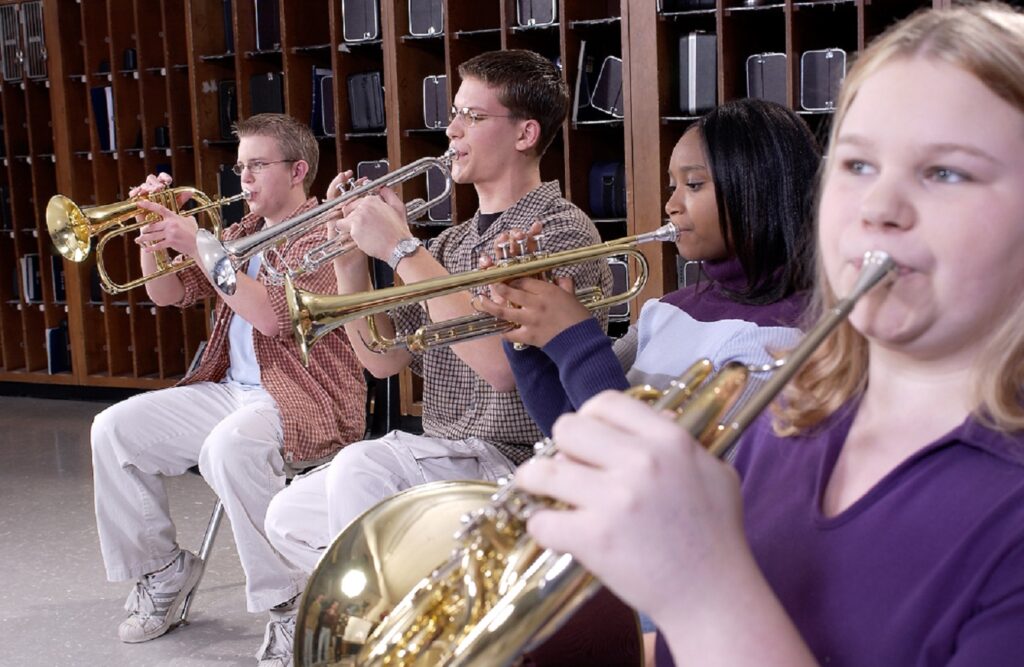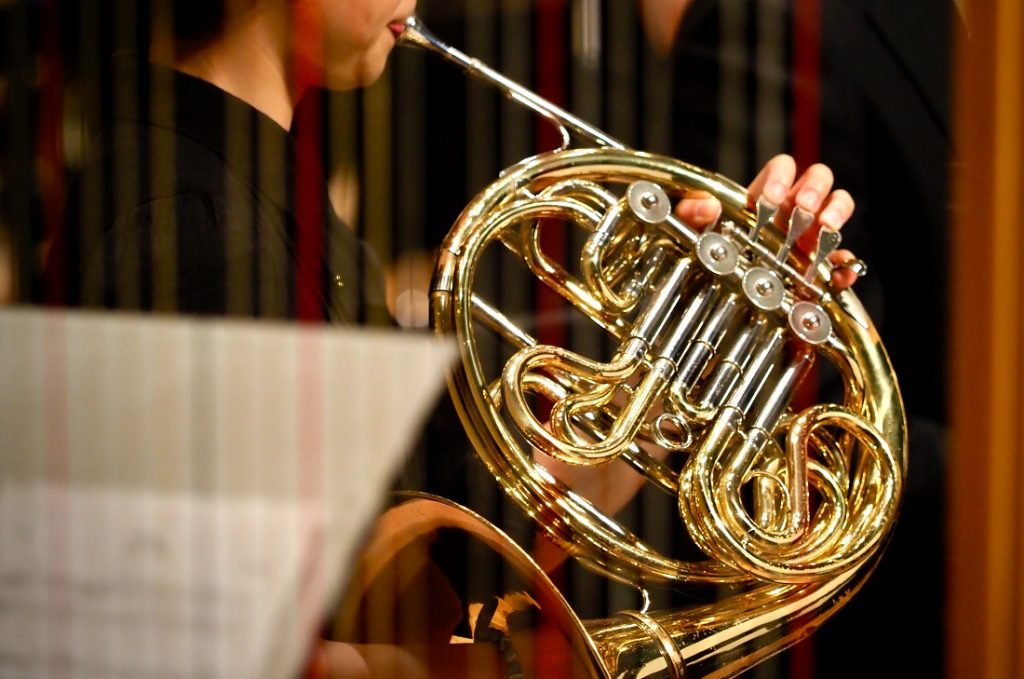Does Your Student Need an Upgraded Instrument?
What to say when your student is ready for the next level but their instrument isn’t.
A poor carpenter blames their tools.
I do believe this most of the time, but at some point, you look down at your hammer and notice that the handle is cracked and it’s missing the head (you know, the part that actually hammers?). It’s time to shift the blame a little bit and consider an upgrade.
You’re working with a student who’s doing everything right — showing up, practicing, listening, trying — and it’s still not happening. The tone is stuffy. The range is locked in place. That one note won’t ever quite speak.
At some point, this thought crosses your mind: Maybe it’s not them. Maybe it’s the horn.
Now what?
Do you say something? Are you just imagining it? Are you about to sound like a used car dealer to a family already stressed about money?
There’s no script for this, and we certainly must be delicate regarding anything about finances today. But with a few considerations, we can bring our students and program to the next level without breaking the bank.

When Nothing Else is Working
A few years ago, I had a clarinet player — let’s call her Maya — who was ready for more. She had the right mindset, the right work ethic and all the right habits. But something was off. Her intonation was always fighting back. Her tone never opened up.
She’d fix one thing, and three more problems would show up. I kept adjusting reeds. She kept trying different embouchure tweaks. Eventually, we got desperate enough to try a school-owned intermediate instrument that hadn’t been played in years. I half expected the pads to fall out when she opened the case. But it played.
The sound opened up, and the notes actually landed where they were supposed to. She was surprised and relieved. She told me she didn’t realize how hard she had to work with her old clarinet.
Her parents were surprised too — not because they didn’t want to help, but because no one had ever explained that beginner instruments aren’t meant to last forever. They thought she’d use the same clarinet until she graduated. Her parents figured that “student model” just meant “cheaper.” They didn’t know that it also meant “limited shelf life.”
As an experienced music educator, I knew better, but I was either too busy to address it or assumed that everyone knew when to upgrade. I realized I had to make a change and educate my students and parents about instrument upgrades.

Not Every Problem Is a Practice Problem
- “Mr. Stinson, my note won’t sound.” “Practice. More air.”
- “Mr. Stinson, my valve is spinning around like a joystick.” “Practice. Also, more air.”
- “Mr. Stinson, I think my arm is broken.” “Practice. More air. Then go to the nurse.”
If you’re early in your teaching career, it’s easy to assume that every issue can be solved with more reps. That’s what I used to believe — and to be honest, I still think it’s true most of the time.
But sometimes the horn fights back in a way that practice can’t fix.
Like the euphonium with the tuning slide that won’t move, no matter how much you grease it or threaten it with a rubber mallet. Or the sax with a neck cork so dried out that it might as well be a stick of chalk. Or the trumpet that’s been rebuilt three times and still has a tone that sounds like it’s coming through a traffic cone.

Here are a few red flags I’ve learned to notice:
- A student consistently plays with distorted tone despite solid fundamentals.
- Intonation can’t be fixed with a tuner, drone or prayer.
- Range is capped in a way that doesn’t line up with the student’s effort or understanding.
- The kid instantly sounds better on a borrowed or test instrument.
- Repairs don’t fix the issue — or they do, but only for a week.
One of my flute players — a senior — spent three years thinking she just wasn’t good enough to play above the staff. There was a tiny dent in the headjoint — just enough to make high notes feel impossible. Once we swapped it, the range opened up in days. She was ecstatic. I wish I had addressed this sooner.
The lesson? Sometimes it is the horn. And our job goes beyond teaching notes and rhythms. It is our responsibility to ensure our students have working equipment.

The Conversation Isn’t a Sales Pitch
This is the part that held me back the longest. I hated the idea of sounding like I was trying to sell something. The first time I brought it up to a parent, I backpedaled so much they thought I was apologizing for their kid.
Once I got over myself, the conversations went pretty well. Here’s what helped:
- Be specific: I try to describe it in everyday terms. “She’s doing all the right things — it’s like she’s trying to run a race in shoes that are two sizes too small. They’ll still work, but they’re holding her back.” (Note: Have as many analogies as possible. Car types work well, too. I often tell my parents we aren’t looking for a supercar, but something akin to a Honda Civic or Toyota Corolla — reliable cars that will last a while.)
- Offer realistic next steps: Don’t just say, “She needs a new instrument.” That’s vague and intimidating. Give a few options: a used horn from a local shop, a rent-to-own plan, even a list of models to watch for on Craigslist or Facebook Marketplace. If your program has a loaner or grant option, mention that, too. Just make sure that you tell parents that you are more than willing to check over or playtest anything! It is OK to sell yourself as the expert on this.
- Be patient: I often say something like, “There’s no rush. I just wanted to put it on your radar, because I think she’s ready for more, and I don’t want the instrument to be the thing slowing her down.”
- Be transparent: If your school partners with a specific store or dealer, let them know that up front. “Here’s the store we work with — you can ask about affordable upgrade options from instrument manufacturers. I don’t get any kickbacks, and you’re welcome to shop anywhere. Just wanted to give you a starting point.”
- Timing matters: I’ve found it works best in a quick email or after rehearsal, when it’s just a calm, casual, “Hey, can I share something I’m noticing?”

It’s OK to Learn This the Hard Way
I wish someone had told me that beginner instruments aren’t meant to last four years. I also wish someone had told me that it’s not rude to talk about upgrades. For a long time, I felt like bringing it up meant I was overstepping.
But silence doesn’t serve your students.
I had a trumpet player once who was stuck – stuck in every way a kid can be. Low confidence. Frustrated sound. Constantly comparing himself to stronger players. I finally gave him a school-owned horn, and after a week, he said, “I thought I just sucked at trumpet. I didn’t know it could feel easy.” And the kicker here is that his original horn was a good brand and model! It just happened to be produced at a time when these specific instruments dipped in quality.
He didn’t magically become first chair. But he did stop beating himself up — and that was the bigger win.
So now, when I see a kid grinding and still hitting walls, I ask myself: Have I done everything I can — including checking the gear? Because sometimes that’s the missing piece. In fact, I’ve now shifted to checking the equipment first. (Although we still have those times when a kid blames the horn, and we find out that the horn is perfectly fine…)

Advocate First, Upgrade Second
This part gets overlooked. Your job isn’t to sell — it’s to advocate.
You’re not recommending a pro model because you want a flashy-sounding section. You’re recommending it because a kid is showing you that they’re ready. And families don’t always know that.
Sometimes I’ll say: “You know how in sports, kids move up to different cleats or gear when they hit the next level? It’s kind of like that. What worked before might still work, but it’s not built for where they’re going.”
And honestly, sometimes the answer is still no. That’s okay. Even just saying it out loud helps the kid know it’s not just them.
What I’ve stopped doing is waiting until things get so bad that it’s obvious to everyone. It’s better to open the door early, gently and let the family decide the timing.

One More Thing: Check Your Own Bias
I admit that early on, I had a weird chip on my shoulder about making things last as long as possible, even beyond its lifespan. I grew up on hand-me-downs and duct tape repairs.
But now I see things differently. It’s about giving students tools that let them succeed — the same way we’d advocate for better reeds, more inclusive rep or accessible practice time.
In many cases, the family wants to know what their kid needs. They just haven’t been told yet.
So, I get it if you’re hesitating. Start with one student. Say one thing. And see what happens.

Start the Conversation
This isn’t about gear snobbery or turning everyone into a professional musician. Most families just want to know: Is my kid doing OK? Are they getting what they need?
When the answer is “yes, but the instrument is holding them back,” you owe it to your student to say so — gently, clearly and with empathy.
If you’re not sure how to say it? Try this:
“You should know that your student is doing really well. But they’ve outgrown some of what this instrument can do. There’s no pressure, but I wanted to let you know in case you ever want to explore what’s next.”
You’re not pushing — you’re just letting them know it’s an option. Sometimes that’s all a family needs.















